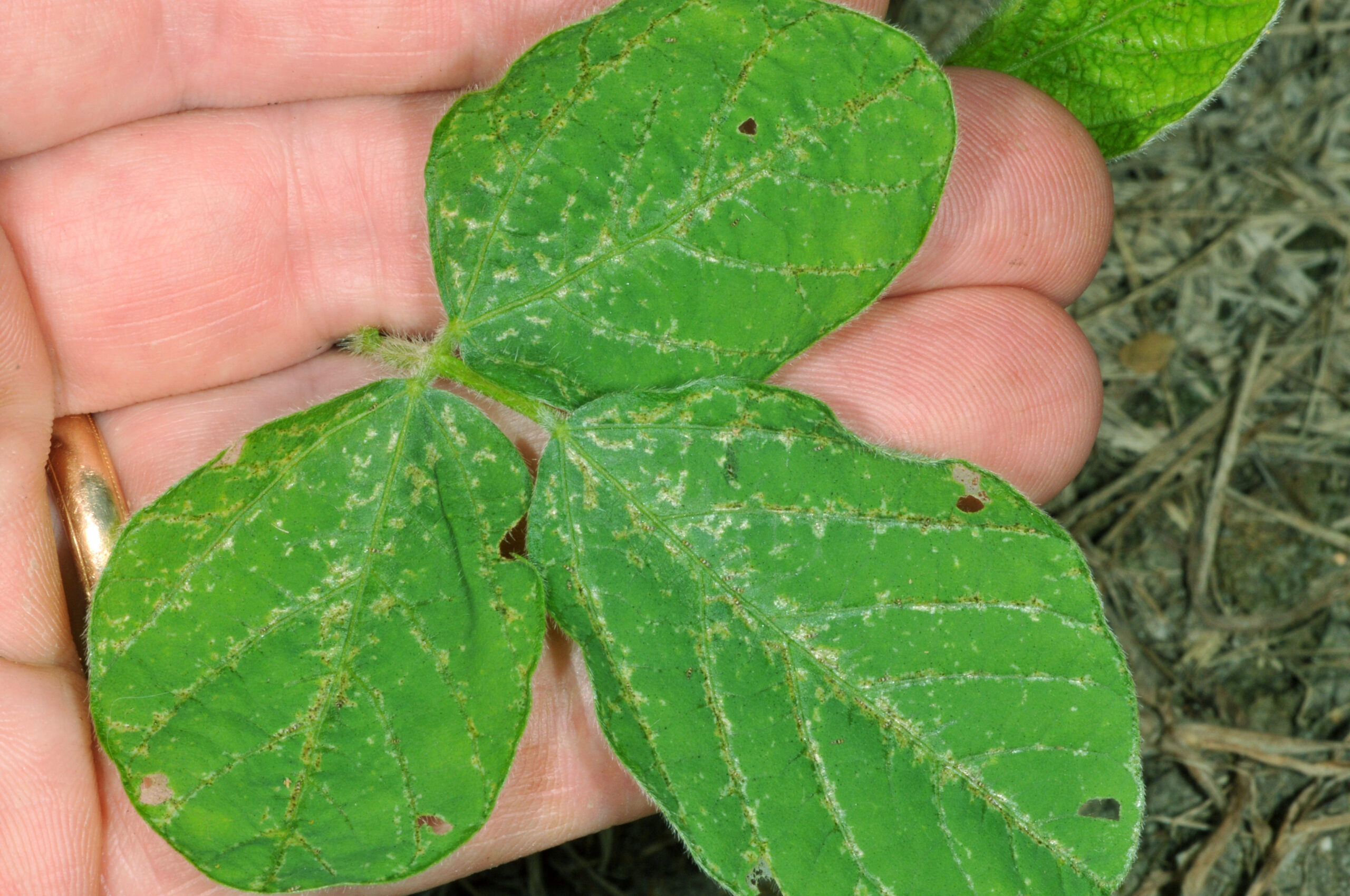Soybean Thrips (Soybean)
Sericothrips variablilis Beach
Search the Pest & Crop Newsletter

The ability to see these full-sized life-cycle images is currently disabled to resolve an issue.
Appearance and Life History

Photo by J. Obermeyer
There are many species of thrips, some of which are serious pests of fruit, vegetables, flowers, and field crops. Although rarely noticed, thrips are likely the most numerous insects in soybean fields.
Thrips are minute, slender-bodied insects ranging from 1/32 to 1/5 inch (0.8 to 5 mm) in length. Their wings, when present, are fringed with close-set long hairs.
Young thrips go through 4 wingless stages between hatching and adulthood. An entire life cycle requires only 2 to 4 weeks. Thrips are present throughout the summer, with many generations occurring each year.
Damage
Thrips make tiny, linear, pale-colored scars on soybean leaves where they penetrate individual leaf cells and feed on the leaking plant juices. They usually feed on the undersides of leaves, much of which occurs along the veins. When leaves are heavily infested, the feeding scars may be so numerous that a mottled look appears along and between the leaf veins and leaves may become crinkled in appearance.
Soybean thrips rarely cause problems, but soybean is most susceptible to thrips damage early in the growing season from growth stages VE to V6. Dry, hot weather increases the threat of damage. Thrips are a vector of soybean vein necrosis virus, a relatively new disease on some cultivars with its impact on yield unknown.
Sampling Method
- Sample if thrips’ damage is found or suspected during early field visits.
- 5 areas of the field, 10 consecutive plants
- Remove the fifth trifoliolate down from the uppermost node. On younger plants, which have not reached at least the V5 stage, remove the lowest trifoliolate for inspection.
- Use a hand lens to carefully examine the underside of the leaves and count the number of thrips present.
- Repeat this sampling pattern for each plant to be examined.
- Determine the average number of thrips per trifoliolate.
- Estimate the percentage of foliar discoloration exhibited by each plant. Consider that drought-stressed plants may be exhibiting symptoms from other factors, eg., chemical injury, etc.
Management Guidelines
Soybean Insect Control Recommendations: E-series 77-W (PDF)
Thrips rarely cause economic damage. However, yields may be significantly reduced if soybean is under moisture stress early in the growing season and the thrips population is high. If over 75% of the sampled trifoliates are damaged and there is an average of 8 thrips per leaf, treatment may be advisable.


